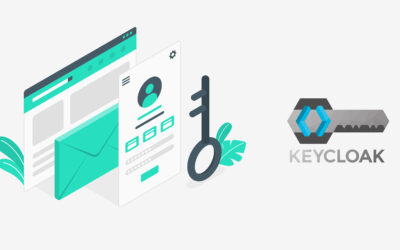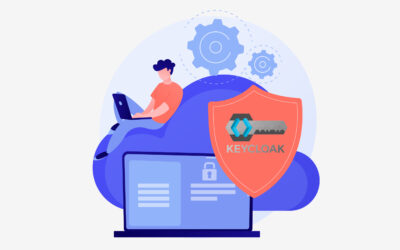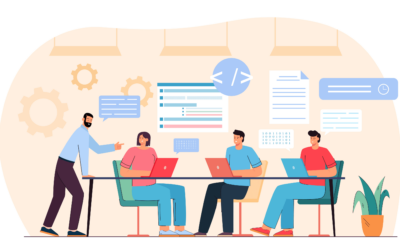Table of Content
Sharing data and business processes among applications and data sources. EAI allows customers to link applications and systems with automated processes among different operating systems, databases, formats, and languages.
Today, many businesses have lost their effectiveness due to working with outdated technology. Systems with many components working individually have become complex structures that are expensive to operate. Information and systems in these contexts tend to fall into “silos,” or separate locations, with inadequate operations processes, which lead to making organizations inefficient.
Centralizing point-to-point (P2P) integrations across the infrastructure were popular in the past, but as the number of applications to manage grew, it became difficult to maintain the architecture due to the frequent modifications that required coding.
Monolithic and layered architectures are associated with legacy systems and have limitations for updating and scaling apps. Most enterprises need a unified app environment that supports legacy applications while transitioning or migrating to microservices architectures.
Microservices provides a structure, organized around business capabilities, which provides loosely coupled services with flexible scalability and independent deployment.
The success of embracing an enterprise application integration strategy depends on a business’s current architecture as well as the solutions that ensure fitness for purpose.
The most common architectures are monolithic and layered architectures (legacy systems), microservices, event-driven, and service-oriented (SOA).
What is enterprise application integration?
An enterprise application integration system is a middleware software, or intermediary, that links multiple applications and processes, leading to a free flow of data across the organization.
Some features of EAI software include:
- Facilitates data exchange between applications
- Synchronizes data
- Decouples apps
- Integrates processes across units
- Avoids technology and vendor lock-in
- Improves data management
Benefit: Agile integration enables innovation by implementing essential components and technologies in the enterprise application architecture.
Enterprise Architecture Strategy
Enterprises require technical leadership to visualize their architectural capabilities in order to define the technology infrastructure and breakdown of components and subsystems, so the right interfaces and APIs can be determined. Business agility requires optimization of systems performance through strategic planning of enterprise architecture.
Appropriate systems design decisions are critical in making the right architectural choices. Changing needs and a vision of future adaptation require enterprises to consider recommendations in the following areas:
- Technology Stack
- Interoperability
- Technology Changes
- Consistency Across Solutions
- Patterns Applications
- Implementation Approaches
- Solutions Usability and Behavior
Contact a Krasamo enterprise architecture strategist to conduct an architectural assessment for your enterprise.
Microservices vs. Monolithic Architecture
The debate between microservices and monolithic architecture has become central in modern software development. These two architectural styles represent distinct approaches to building and scaling applications, each with its own strengths and challenges.
A monolithic architecture structures an application as a single, unified unit. All components, including the user interface, business logic, and data access, are tightly integrated and run as one cohesive process. This approach simplifies development and deployment, especially for small to medium-sized projects, as everything is in one place. However, as the application grows, managing and scaling a monolithic codebase can become cumbersome, often leading to slower development cycles and higher maintenance costs.
In contrast, microservices architecture breaks an application into smaller, independent services that communicate over APIs. Each service is responsible for a specific business capability and can be developed, deployed, and scaled independently. This modular approach enables teams to adopt different technologies for each service, enhances fault isolation, and supports rapid scalability. However, the added complexity of managing distributed systems, inter-service communication, and data consistency presents significant challenges.
Choosing between these architectures depends on factors like project size, team expertise, and scalability needs. While monoliths offer simplicity and ease of deployment, microservices shine in scenarios demanding flexibility, scalability, and resilience.
Microservices Architecture
Microservices architectures solve many problems for today’s digital enterprises. Microservices breaks down applications into small, interconnected components (loosely coupled) and processes that work together as mini-applications around business capabilities, optimized to work in a multi-cloud model.
Microservices architectures consider design services with business logic that invokes operations, evaluating how services collaborate and communicate through APIs with other services and apps. Collaborating services use synchronous protocols (HTTP/REST/gRPC) or asynchronous messaging (AMQP).
Microservices can run on clustering Kubernetes solutions and Docker containers with Cloud Virtual Machines (VMs) and automated with PaaS solutions.
Microservices enables the adoption of emerging technologies,agile development and delivery.
Benefits of Microservices:
- Decomposes applications into sets of services
- Modularity makes it faster to develop
- Favors lightweight protocols—REST API and API layer
- Enables independent development of services using current technologies
- Microservices are independently deployed—continuous iterations allow continuous deployment
- Independent scalability of services by deploying simultaneous instances
- Implement API Gateway that routes requests to connect end-points
Drawbacks of Microservices:
- Complex communication mechanisms—requests for multiple services
- Update multiple databases from services (consistency-based approach)
- Difficulty of testing between services (requires extra configuration of services)
- Complex deployment—must develop a mechanism to discover service locations (host and ports)
- Requires a higher level of automation and deployment methods
- Defining API gateway patterns is complex
- Implementation of interservice communication for failure cases
Monolithic Architecture
Monolithic architectures favor simple applications packaged and deployed as single processing units. These usually grow in size over time, becoming complex, with many limitations.
Benefits of Monolithic Architecture
- Simple to develop and deploy for small applications
- Can scale running multiple copies behind a load balancer (optimized response time)
Drawbacks of Monolithic Architecture:
- A larger code base makes it difficult to understand and modify
- Decreased productivity due to an overloaded Integrated Development Environment (IDE) and web container
- Not frequently updated due to redeployment risks—not practical to deploy complete application for every small change in components
- Cannot scale components independently as running copies increase instances due to data volume, increasing resource requirements
- Complex for teams to work independently—increased coordination efforts to make changes hampers continuous deployments
- Difficult to adopt new technologies (frameworks, languages)
- Long start-up times deter productivity
Service-Oriented Architecture (SOA)
Service-oriented architecture (SOA) is a software style in which individual services (similar to microservices) with limited communication protocols (SOAP or Apache Thrift) are exposed through an enterprise service bus (ESB) platform. Services are organized around business processes, and functions are separated, which can cause failure impacts. SOA can be implemented with microservices, web services, and around legacy systems. Applications are connected through an Enterprise Service Bus (ESB).
Enterprise Service Bus (ESB): ESB is a middleware or integration method that enables communication (messaging) between integration points that are user-friendly, fast, and flexible. Applications expose capabilities through automated enabled services that are reusable and are published in a “service registry” as a point of discovery for other applications to use. A centralized approach that relies on a single team (and can create bottlenecks), ESB supports both service-oriented architecture (SOA) and event-driven architecture (EDA) styles.
Event-Driven Architecture (EDA)
Event-driven architectures capture and process events as they occur to make decisions in real time and build responsive applications. EDAs are loosely coupled and work well for distributed applications. EDAs run in the cloud and containerized environments, as they have modular and portable components. Event-driven solutions can use asynchronous API systems and asynchronous messaging to handle events streaming.
EDAs are asynchronous-based, allowing for fast data processing with decoupled components that can process events across cloud environments, reducing failure risks.
Apache Kafka: Apache Kafka is an open-source event streaming platform ideal for asynchronous event-driven integrations.
For more information about building an event-driven system, contact Krasamo’s cloud computing consulting specialists.
Application Integration Options
- Messaging
- Application Programming Interfaces (APIs)
- Application Connectors
- Enterprise Integration Patterns
- Data Models—Data Streams
Enterprise Integration Patterns (EIP)
Businesses have many integration scenarios and challenges. Integration architects have been learning by solving recurring problems and comparing them with newer problems, establishing patterns and their associated solutions.
Patterns can be used to solve various integration problems and provide architectural design guidance to develop integration solutions.
Enterprise application integration patterns provide a communication method between systems.
Types of Patterns
- API Gateway Patterns
- Messaging Patterns
- Integration Patterns
- Access Patterns
- End Point Patterns
- Event-driven Patterns
Asynchronous Messaging is used for communication with outside applications that do not require an immediate response; it “waits for a response” and subsequently responds.
Synchronous Messaging shares data through APIs to support multiple applications simultaneously, maintaining an open connection with the server.
Enterprise Architecture Framework (EAF)
The enterprise architecture framework is the implementation of methods to create the enterprise architecture. It’s a comprehensive approach to design the components to build IT systems aligned with business strategy.
Enterprise Application Integration Platforms
Enterprise Application Integration (EAI) platforms are essential tools that enable businesses to connect diverse software applications, systems, and processes within their organizations. In a world where businesses rely on multiple specialized tools—ranging from customer relationship management (CRM) systems to enterprise resource planning (ERP) software and beyond—EAI platforms serve as the backbone for seamless communication and data flow.
Cloud Application Integration Platform
Implementing EAI in a platform (PaaS) consolidates applications into a single platform, allowing the creation of APIs in a microservices environment, with automated API documentation, visual design, data management tools, API behavior validation, and capabilities to deploy a CI/CD pipeline with containerized microservices. Also, PaaS benefits integrations by providing a service with prebuilt connectors, adapters, components, and APIs.
Cloud-native platforms are replacing application servers.
Data Integration Platform Open Source
Long-term enterprise application integration strategies point toward open-source data integration platforms as the best way to “future-proof” the enterprise with a flexible infrastructure. Enterprise application integration (EAI) projects developed with open source can benefit from a right-out-of-the-box solution, including preconfigured environments ready to run as well as high-quality technical support.
Enterprise Application Integration Vendors and Tools
Vendors and tools that support integration flows include:
- Red Hat Middleware
- Apigee API Management
- Talend Open Studio for ESB
- Anypoint Platform Mulesoft
- AWS Application Integration
- Informatica
In addition to the tools, the project managers and their skillsets will truly impact the implementation. Before embarking on a project by comparing offerings, however, be sure to understand implementation considerations, key differentiators, latest developments, and the vendors’ landscape.
Long-term enterprise application integration strategies point toward neutral vendors and technologies.
Looking for a partner to develop and manage end-to-end integrations between systems suited to optimize business processes, manage IoT data transfer across networks, or handle communication types?
Want to know about custom-coded solutions and integrations? Or how to refactor a monolithic application into a microservices architecture? A Krasamo enterprise architecture consulting team will be happy to explain more about enterprise application integration best practices and examples.












0 Comments